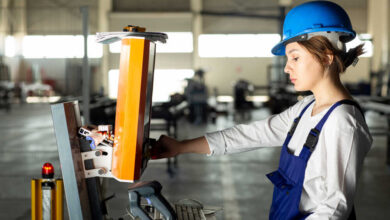Complete Guide to ILGMS Citizen Login Portal 2023

As we all know, the Local Self-Government Department of Kerala works under the supervision of state officials. They oversee and manage the department’s activities. If you’re interested in applying for something related to this department, you can do it online on their official website at tax.lsgkerala.gov.in. To apply online, you’ll need to register create an account, and then log in. We’ve included a direct link to apply online here. Please read this article to get all the important information about ILGMS Citizen login.
Ilgms Citizen Login – The General Transfer Lsgkerala
The Sanchaya Portal is like a website store where you can get a lot of helpful stuff on the internet. It’s like a virtual shop you can visit from your computer or phone. This shop has all sorts of information about things like property taxes (that’s money you pay for owning a house or land), finding out who owns a piece of land or a building, how much people charge for renting their places, and whether they have permission to do certain things like selling food or showing ads.
You can even get something called an ownership certificate online from this shop. If you want to know more about how to use this online shop, you can read this article to learn extra details. To put it simply, the Sanchaya Portal makes it really easy to find important info and do things related to property and permissions on the internet.
ILGMS Citizen Login Portal:
Now, the Kerala State Government has created another online place called the ILGMS Citizen Login Portal. It’s like a special section in the government’s internet office, and it’s connected to the Local Self-Government Department. This special place helps people who want to learn about property taxes, get certificates that prove they own something, figure out how much it costs to rent land or buildings or get special permissions for different activities. The government in Kerala wants to be part of Digital India, so they opened this online office to make it simple for folks to get these services.
This website even allows you to make payments online using various methods, which is really convenient. You can find all the information you require on this user-friendly website. Towards the end of this article, there’s a direct link provided to this unique online platform, making it even simpler for people to access what they require. This demonstrates that the government is genuinely committed to making things more modern and using digital technology to assist its citizens.
List of Online Services at Local Self-Government Dept, Kerala:
- Citizen Service Portal: A website where you can access government services.
- Plan Progress: Information about how government projects are going.
- Property Tax: Money you pay to the government for owning property.
- Building Permit: Permission to build a house or structure.
- Civil Registration: Official records of births, deaths, and marriages.
- Welfare Pension: Money from the government to help those in need.
- Meeting Minutes: Notes from official meetings.
- ILGMS: A government website for services and information.
- Acts and Rules: Government laws and regulations.
- Orders: Official instructions from the government.
- All Elected Members: People chosen by the public to represent them in government.
- Trash Management: How the government deals with garbage and waste.
- Life Project: Government plans to improve people’s lives.
- Covid-19: A serious illness caused by a virus (similar to the flu).
At ILGMS.LSGKERALA.GOV.IN, you can access these services online. It’s a convenient way to find information and get things done. If you’re interested, you can visit the website to learn more about services like birth registration, marriage registration, pensions, and permits.
Ilgms tax.lsgkerala.gov.in Login Property Tax Payment
To do a tax Lsgkerala.gov.in login, just do these easy steps:
- Go to the official LSGD website.
- You’ll see a “Login” option on the main page.
- Type in your username and password.
- Click on “Login” in the drop-down menu.
- That’s it! You’ve completed your Ilgms login.
Procedure for ILGMS Citizen LOGIN Online
Here’s how to do the online ILGMS Login in simple steps:
- First, go to the official ILGMS organization’s website.
- You can also use this direct link to access the ILGMS Citizen Service Portal.
- Once you’re on the website, find and click on the “Login” tab under the online services section.
- Click on that option. Now, you’ll see spaces to enter your username and password.
- Just fill in your username and password, and you’re all set. You’ve now completed your online ILGMS Citizen Login.
In short, visit the ILGMS website, find the “Login” tab, enter your username and password, and you’re good to go.
ilgms.lsgkerala.gov.in Citizen Service Portal Contact Details
- Information Kerala Mission, Thiruvananthapuram, Kerala
- Phone Number: (+91) 471-2773160
- Email ID: ilgms.ikm@kerala.gov.in
- Official Website URL: ilgms.lsgkerala.gov.in
Here is all the information regarding ILGMS Citizen Login. Get in touch if you need to know anything more.
Read also: Full Guide To Mycherrycreek login and More Details




